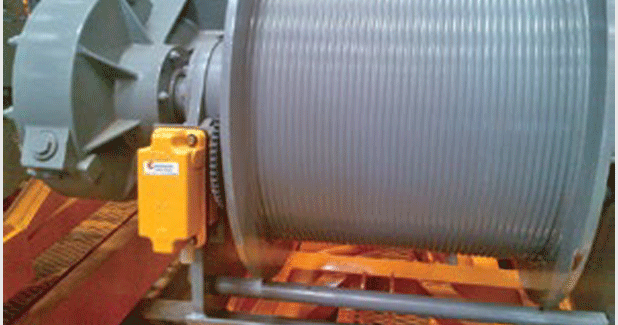
Safety Features in Tower Cranes
A: Hoist Limit Switch
B: Slew Limit Switch
C: Trolley Limit Switch
D: Travel Limit Switch
E: Moment Cut Out
F: Max. Safe Working Load Cutout
Note: Adjustment of Load Limiting Control should be done sequentially, starting with Moment Cutout followed by MSWL
Safety in tower crane begins with the civil foundation, which should be adequate to sustain the dead weight of the crane as well as the dynamic of the load being handled, in a 360o format. Subsequently, all safety practices have to be observed during assembly and dis-assembly processes because crane comprises of large structures and many sub assemblies.
Operational safety kicks in once the crane is assembled and commissioned for use. During operations the safety features and devices provided on the crane play a key role while during increase in height of the tower or inner climbing, safety process similar to initial installation and commissioning, have to be strictly observed.
Safety Features - Devices:
Modern tower crane are equipped with many safety located at strategic points on the equipment to provide the best possible safety. It must be noted that the safety features and devices are not working tools; they are only used exceptionally, in order to avoid the consequences of operating errors. The same are elaborated as below in consultation with The Manitowoc Company Inc:
A.Electrical Limit Switches
B.Load Moment Control
C.Others
Limit Switches & Load Limiting Control on Tower Crane
Using a typical example the illustration below shows the locations of main safety devices on Manitowoc MC85B/MC115B/MC175B Tower cranes
Functions of Safety Device
1.Hoist Limit Switch
Allows stopping hoisting movement, when the hook block approaches the trolley. It also forbids the winding of the rope on the hoist drum in reverse direction during lowering
2.Slew Limit Switch
Usually provided in cranes, not provided with electrical rotary collector. Stops slew movement of the jib after it takes 1.5 rotations in either right or left directions, to avoid damage to electrical wires and excess torsion.
3.Trolley Limit Switch
Stops Trolley movement when it approaches the jib foot or nose ends
4.Travel Limit Switch
It brings crane movements to standstill before reaching the stop ends. There is an additional over run switch, which operates when travel limit switch malfunctions
5.Moment Cutout
The cranes are designed for constant maximum load moment. Under no circumstances the crane should exceed the design load moment. This cutout stops hoisting whenever hoisting is attempted to lift heavier than rated loads. This is more applicable to travelling type of cranes.
6.Max Safe Working Load Cutout
The crane operation has to be stopped, whenever overloading occurs, beyond permissible limits. Many manufacturers provide electronic Load Moment Indicators integrated with overload protection and features which allow the crane to revert to safe condition like lowering of the load or inward movement of the trolley. While some provide mechanical deforming rings with electrical limit switches. In both case the device has to be initially calibrated and later after recommended periodic intervals.
7.Anti rope fall out device
This is a mechanical device mounted on the hook block to prevent the hoist rope falling out whenever the same is completely lowered and resting on the ground.
8.High Wind Speed Protection
This is an electro mechanical protection mounted on top of a tower crane. Usually the maximum permissible wind speed for safe operation of a tower crane is 25 kms. per hour. This device comprises of a small wind turbine. The number of rotations generates an electrical signal which calibrated to the wind speed. As soon the wind speed exceeds the permissible limit, it stops the crane operations.
9.Jib Extension Lowering Device
After completion of the job the Tower crane is at its maximum height. As such lowering the complete jib (which may be 50 to 100 meters long) is a problem. To facilitate safe lowering an additional winch is provided in the mother jib. Initially the jib extension is hooked to the jib extension, the connecting hardware is removed and the winch is used to lower the extensions to the ground. This substantially reduces the jib length making it safer to lower the mother jib.
10.Trolley Lowering Feature
Many times the trolley has to be lowered to the ground for repairs and maintenance and then remounted on the jib. To facilitate the same the travel roller are designed to unfastened in situ making the rest of the trolley free from the jib. Initially, the same is hooked to the above mentioned jib and after unfastening lowered to the ground or hoisted, as the case may be.
The above safety features, devices and methods provide a safe working of a tower crane so long the operators respect their contributions and value their own lives. The crane owners should strictly implement all maintenance procedures with special with special emphasis on safety in letter and spirit.


 +91-22-24193000
+91-22-24193000 Subscriber@ASAPPinfoGlobal.com
Subscriber@ASAPPinfoGlobal.com